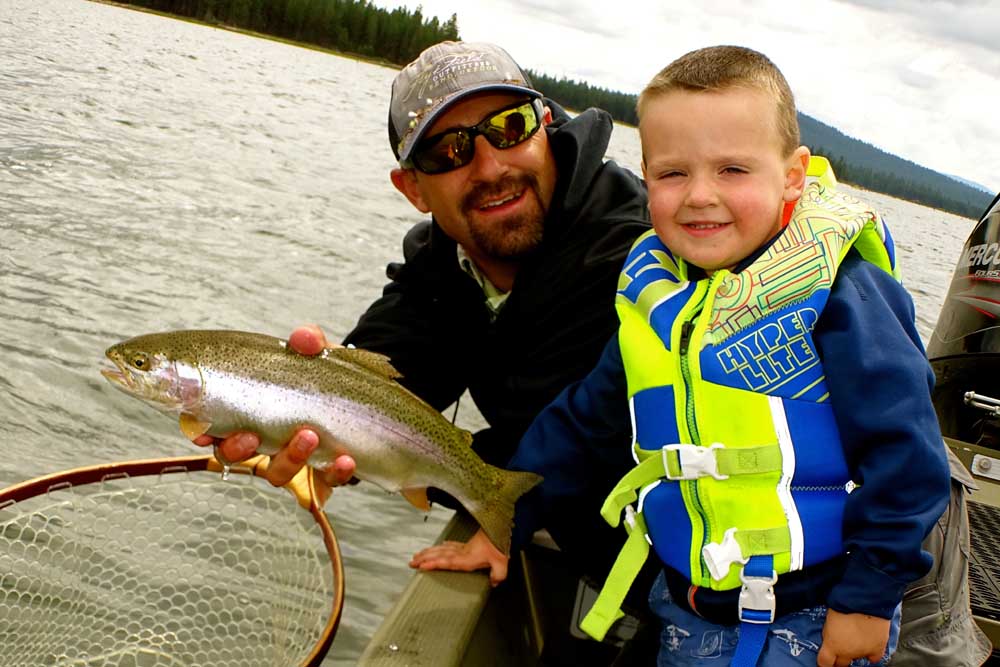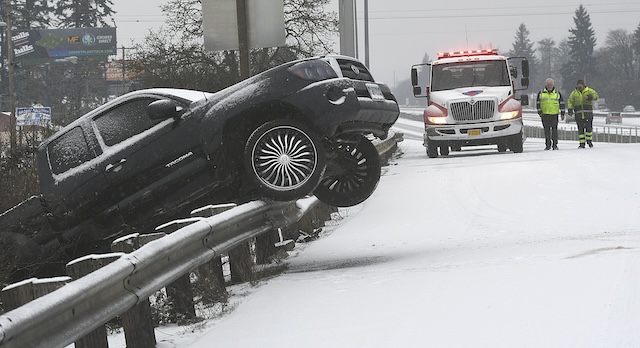Hot weather means warm-water fishing in Oregon
Published 12:00 am Wednesday, July 15, 2015

- Submitted photo/ Ellie CookWith a break in the heat wave and rain in the forecast, Scott Cook seized an opportunity to take his three-year-old Henry fishing for his first Crane Prairie Crane-bow.
The Hinton boys, 11-year-old Matthew and 10-year-old Kyle, were with me on a run up into the Cascades. We stopped in at Crane Prairie Resort and saw Pat and Jody Schatz behind the counter talking with Scott Cook from Fly and Field Outfitters, and his kids, Ellie, 10, and Henry, 3.
Henry needed a bit of spin-fishing mojo from Pat. He got it, and Henry caught his first Crane-bow out on the water with dad guiding and big sister running the camera.
Scott Cook knows where the cool rainbows hang out.
With little snowpack, and a warmer than normal spring, everything is different this year. Finding fish in their usual spots is not a given. I used to check water temperature on every trip and record it in my journal. It makes a difference.
Temperatures can vary in bigger lakes. Trout search out cool water in deep holes, in the shade and in creek channels and around cold springs. In such places, the fish may not be stressed.
A few miles up the road, in a shady little backwater, we managed a fish each for Matthew and Kyle — one on jar bait and the other on a wet fly. After the boys cleaned their catch, we drove up to Waldo Lake, then hiked into Charlton Lake, up in the 5,000-foot zone, just off the Pacific Crest Trail.
Matthew checked the water temperature at Charlton; that’s where he fell off a log.
Trout thrive in an optimum range of 55 degrees to about 62 degrees. When water temperature climbs into the 70s and 80s, rainbow trout may not survive the exercise we give them on graphite and monofilament. In fact, overheated steelhead and sockeyes are dying in the Columbia. Trout are belly up in some of our reservoirs. The Department of Fish and Wildlife has canceled stocking plans for some lakes and released steelhead and salmon smolts earlier than normal to save them.
Not all the waters are in crisis, but some of them are.
For trout fishing now, head to the high country, the deep natural lakes around Mt. Hood and the Cascades. There are a number of hike-in waters where the fish don’t get a lot of the kind of exercise we like to give them.
While trout are suffering in this heat, these are good days to chase warm-water fish.
Smallmouth and largemouth bass can be caught year-round, but in July and August, an angler can put big numbers in the net. For trophy days and trophy fish, Oregon’s best bass bets are the John Day, the Umpqua and the Columbia.
John Day River
The John Day is one of the top smallmouth streams in the country. Biologists estimate there are between 1,000 and 3,000 fish per river mile; the offspring of 82 smallies that were stocked in 1971.
Ninety percent of the fish are 9 inches or smaller. An angler hoping to hook a trophy has to sort through several small ones. One hundred-fish days are common on this river for an angler who can cover the water.
Some of the best baits are lead head jigs with brown and green plastic worms or grubs.
On the fly rod, Clouser Minnows and weighted bucktail streamers work best when the sun is high. Shake and twitch them to spark strikes from reluctant fish. Break out the surface flies — sliders and poppers — when the sun starts sliding down to the west.
Umpqua River
West of the Cascades, Oregon’s best smallmouth stream is the Umpqua. Highway 38 follows the Umpqua from Reedsport upstream to Elkton. The bass fishery is concentrated between Scottsburg Park and the confluence of the North and South forks. The most popular floats run between Umpqua and Scott Creek. Several take-outs in between, divide the river into manageable drifts. Bank access can be found at bridge crossings, boat launches and parks.
To get started on the Umpqua, try a single-tailed grub or a crawdad-shaped plastic.
Columbia River
For the biggest bass, head to the Columbia, between Bonneville Dam and Boardman.
Shorelines and structures are what bass are about. Launch in the Cascade Locks, at Hood River or The Dalles. For bank access, head east on I-84.
Use spinner baits early in the morning and switch to deep-running crankbaits as the sun goes higher.
If you bring the kids, leave those $10 crankbaits in the tackle box. You’re going to lose gear. Lead heads and plastics are cheaper at just a few cents apiece. Make short casts onto rock piles and around sunken logs. Let the bait sit on the bottom then crank the handle once, let it sit awhile then turn the crank again.
Bass are brawlers. They thrive in warm water. When the conditions are right, you could tangle with 100 in a day.
Think you can take the heat?
— Gary Lewis is the host of “Frontier Unlimited TV” and author of “John Nosler — Going Ballistic,” “Fishing Mount Hood Country, Hunting Oregon” and other titles. Contact Gary at www.GaryLewisOutdoors.com.








